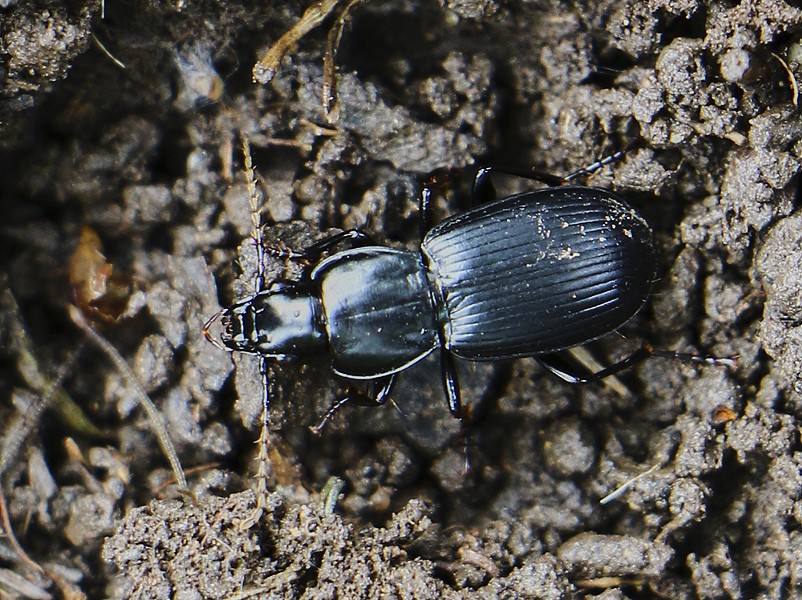Rainy day locals
Head's up: It's tick season again. It seems they like damp weather. My archives show photos of them primarily in April to May and December to January. In the last week, I've pulled one off a dog and one off a friend who had one on her arm. Even if you haven't been outdoors where they wait in the weeds, they can hitch rides on pets that do. You can read more about them in my April 12, 2015, post "Ticks."
Being cold-blooded, most insects spend the winter months dormant as eggs, larvae or pupae, awaiting longer days and warmer weather. Still, some adults persist secluded under rocks like some locally common ground beetles of the genus Pterostichus. This family of beetles is highly predatory, consuming all manner of small invertebrates.
On a recent night walk, I noted quite a few Pacific sideband snails (Monadenia fidelis), the largest native land snails in our area, attaining a width of 2 inches across the widest part of their shells. This species uses "love darts" in their mating process, injecting their partners with a mucus that helps keep sperm alive.
However, I have seen one of our local glow worms attack a full-sized example of this species after a slow motion battle that took about 10 minutes — the snail clotheslined the glow worm and got away, leaving the attacker mired in a gooey sticky bubble bath.
Macro madness
From time to time, someone asks how I got this or that shot and what gear I used. Like most technical people, I suffer from gadgetitis and have an array of cameras and accessories for various tasks.
The more or less formal dividing line for "true macro" is a 1:1 magnification, meaning that a 1-centimeter object will project to a 1-centimeter portion of the image receptor.
After a lot of research prior to buying my first interchangeable lens camera and knowing I'd be shooting mostly insects, I chose Canon because it was the only company with its MPE 65 mm 1-5X lens. It can't be used for anything else. It can take a photo of an individual eyelash but the end of your nose would fill the entire frame. No family portraits unless they're really small.
One challenge of macro photography is the extremely shallow depth of field (DOF). The part of the image that is actually in sharp focus is very thin. In the last few years, focus stacking technology changed all that. The photographer takes a series of photos focusing at different levels along the subject, then, using a stacking program, combines them to yield a single frame, all in focus. This can be almost impossibly tedious but recently computer-controlled rails have taken over the painstaking job of advancing the camera as little as 2 microns at a time. Needless to say, the subject must not move from one frame to the next so the models are seldom living creatures.
Visiting my nephew at his Oregon farm, he told me that I'd missed seeing hordes of little dung beetles consuming nearly all the droppings from his cattle in a very brief time. I never did see any alive but managed to find a few dead specimens, the perfect subjects for the Canon lens, StackRail and Helicon Focus software.
Read more of Anthony Westkamper's HumBug on Sundays at



Comments